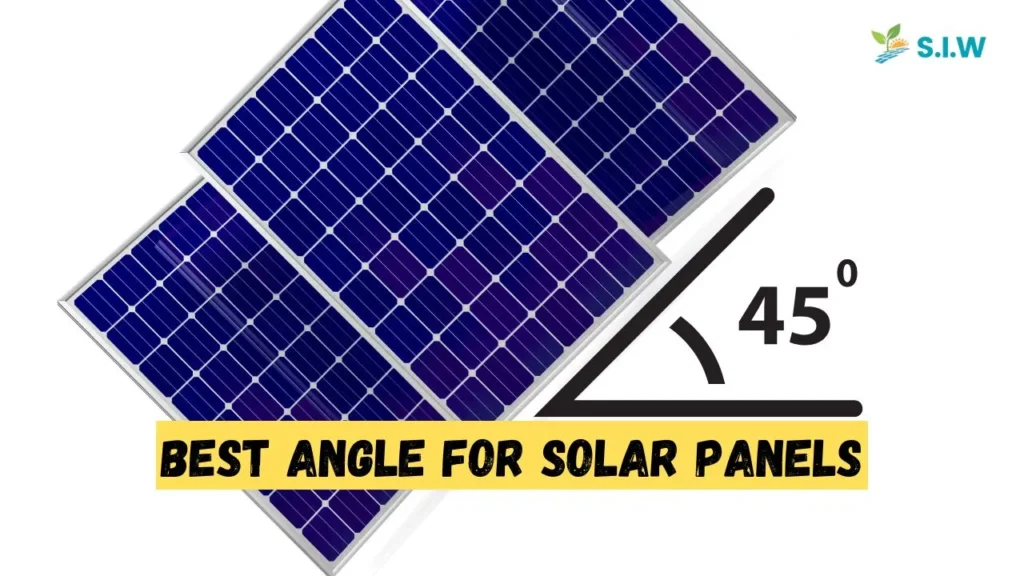When it comes to solar panel installation, selecting the optimal angle is critical for enhancing energy production. The angle at which solar panels are installed can significantly influence their efficiency and overall output. Understanding how to position your solar panels can make the difference between a mediocre system and a highly productive solar energy solution.
Understanding Solar Panel Angle: What You Need to Know
Solar panels convert sunlight into electricity, and their efficiency hinges on how effectively they capture solar rays. The angle of the panels—known as the tilt angle—affects the amount of sunlight they receive throughout the day. Generally, solar panels perform best when they are perpendicular to the sun’s rays. Therefore, the ideal angle depends on geographic location, the time of year, and the specific energy goals of the system owner.
Geographic Considerations for Solar Panel Angle
Latitude Matters
The most critical factor in determining the ideal angle for solar panels is your geographic location, specifically your latitude. Solar panels should be tilted at an angle approximately equal to the latitude of the installation site. For instance, if you live at a latitude of 30 degrees, your panels should ideally be tilted at around 30 degrees as well.
Seasonal Adjustments
While setting the panels at an angle equal to your latitude is a good starting point, seasonal adjustments can optimize performance. The sun’s position changes with the seasons, so adjusting the angle of your solar panels throughout the year can lead to increased energy production:
- Winter: In winter, the sun is lower in the sky. Therefore, a steeper angle, roughly equal to your latitude plus 15 degrees, can help capture more sunlight.
- Summer: Conversely, during summer, when the sun is higher, a shallower angle (your latitude minus 15 degrees) may be more effective.
- Spring and Fall: For spring and fall, a tilt angle close to your latitude will generally yield satisfactory results.
Optimizing Solar Panel Orientation
South-Facing Orientation
In the Northern Hemisphere, south-facing solar panels receive the most direct sunlight throughout the day, maximizing exposure to sunlight. This orientation allows for increased energy capture during peak sunlight hours. In contrast, panels facing north, east, or west may not capture as much sunlight, leading to reduced energy output.
Avoiding Obstructions
Regardless of the tilt angle and orientation, ensuring that solar panels are free from obstructions is paramount. Trees, buildings, and other structures can create shadows that significantly diminish solar energy capture. When planning your solar panel installation, consider the proximity of potential obstructions, especially during peak sunlight hours.
Using Solar Trackers for Enhanced Performance
Single-Axis Trackers
For those looking to maximize efficiency beyond fixed installations, solar trackers are an excellent investment. Single-axis trackers adjust the tilt of solar panels throughout the day, following the sun’s path from east to west. This technology can increase energy production by up to 25% compared to fixed installations, making it a favorable choice for larger solar energy systems.
Dual-Axis Trackers
For even greater efficiency, dual-axis trackers adjust both the tilt and orientation of solar panels. These systems are capable of following the sun throughout the day and adjusting for seasonal changes. While they require a larger upfront investment, dual-axis trackers can yield substantial returns in energy production.
Calculating the Ideal Angle for Solar Panels
Using Formulas for Precision
For those interested in a more mathematical approach, there are formulas to calculate the ideal tilt angle based on latitude and the time of year. Here’s a simplified version:
- Optimal Angle = Latitude ± 15 degrees (for seasonal adjustments)
This formula can help homeowners and solar installers determine the best angle for installation based on their specific location and seasonal requirements.
Using Online Calculators
There are several online tools and calculators that can assist in determining the best angle for solar panel installation. These tools often take into account not only your latitude but also local weather patterns, historical sunlight data, and seasonal changes.
Considerations for Different Roof Types
Flat Roofs
For flat roofs, solar panels can be mounted on adjustable racks that allow for the optimal tilt angle. This flexibility enables homeowners to customize their installations according to seasonal changes and geographic requirements.
Sloped Roofs
For sloped roofs, determining the optimal angle can be more straightforward. The existing pitch of the roof may already be close to the ideal angle, but additional mounting hardware may still be necessary to adjust the angle further for maximum efficiency.
Evaluating Solar Panel Performance
Monitoring Systems
To ensure your solar panels are operating at peak efficiency, consider investing in a monitoring system. These systems can provide real-time data on energy production, helping to identify any issues that may arise, including problems with angle adjustments or obstructions.
Regular Maintenance
Regular maintenance is essential for maintaining optimal performance. Cleaning solar panels and checking for any obstructions or damage can help sustain energy output levels and prolong the life of the system.
Maximizing Solar Energy Production
The angle at which solar panels are installed is a crucial factor in determining their efficiency and energy production. By understanding geographic considerations, optimizing orientation, and using advanced tracking technologies, homeowners can significantly increase their solar energy output. Moreover, ongoing evaluation and maintenance of solar panel systems will ensure they continue to perform optimally throughout their lifespan. Investing time in determining the best angle for solar panels can lead to significant long-term savings and a greater contribution to sustainable energy solutions.








